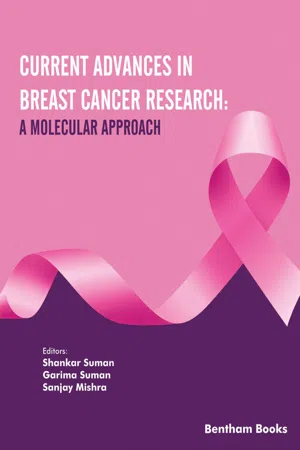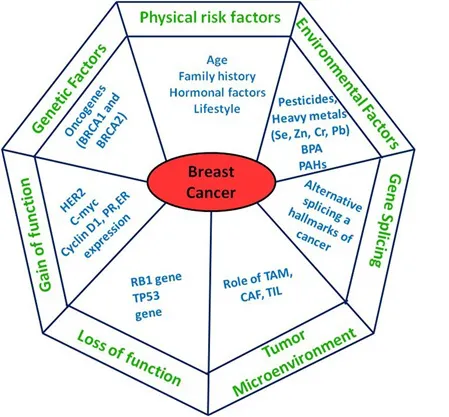
Current Advances in Breast Cancer Research: A Molecular Approach
- English
- ePUB (mobile friendly)
- Available on iOS & Android
Current Advances in Breast Cancer Research: A Molecular Approach
About This Book
Breast cancer is a recognized disease around the world with varying patient outcomes based on the type of breast cancer, access to healthcare and other factors. Survival rates for breast cancer are significantly lower in metastatic cases than localized cases. Early diagnosis and effective treatments for the efficient management of breast cancer are now in demand, as they help to prolong patient life. There have been many breakthrough developments in the molecular biology of breast cancer research in recent times. Advancements in diagnostic techniques (imaging and biomarker detection) for breast cancer have improved the screening of the disease and have improved patient outcomes. Despite these enhancements, the disease is still lethal for patients and the search for a cure requires a complete understanding of the disease.
Current Advances in Breast Cancer Research: A Molecular Approach presents a comprehensive overview of current basic and translational research on the subject. The 14 chapters of the book give emphasis to current knowledge about breast cancer, ongoing challenges, and innovative research findings by different research groups. Readers will find detailed information about breast cancer biology, genetics, clinical diagnostics and treatments. Additional information for advanced readers in life sciences, such as techniques relevant to genomics (including genetic fingerprinting), proteomics, metabolomics and medicine (such as imaging and molecular diagnostics) is also provided. The combination of both basic and advanced information makes this book a useful reference to the student and researcher, alike, seeking an understanding about breast cancer at a molecular level.
Frequently asked questions
Information
Genomic Fingerprint of Molecular Mechanisms of Breast Carcinogenesis
Akanksha Nigam1, *, Shivam Priya2
Abstract
* Corresponding author Akanksha Nigam: Department of Microbiology and Molecular Genetics, IMRIC, the Hebrew University-Hadassah Medical School, Jerusalem, Israel; E-mail: [email protected]
INTRODUCTION
Risk Factors
Age
Family History

Diagrammatic representation of different factors responsible for causing breast cancer.
Genetic Predisposition
Hormonal Factors
Table of contents
- Welcome
- Table of Content
- Title
- BENTHAM SCIENCE PUBLISHERS LTD.
- FOREWORD
- PREFACE
- List of Contributors
- Breast Cancer: A Global Burden
- Current Imaging Techniques in Breast Cancer: An Overview
- An Overview of Genetic, Proteomic and Meta-bolomic Biomarkers in Breast Cancer
- Recent Proteomics Development for Biomarker Detection in Breast Cancer
- Deregulation of Enzymatic Post-Translational Modifications in Breast Cancer
- Genomic Fingerprint of Molecular Mechanisms of Breast Carcinogenesis
- Perspectives of Deregulated Metabolism in Breast Cancer
- Oxidative Stress and Lifestyle-based Changes in Breast Cancer Progression
- Epithelial-Mesenchymal Transition (EMT) in Breast Cancer: An Overview
- miRNA Biology in Breast Cancer Progression
- Calcium Signaling in Breast Cancer: Current Perspective
- Role of Mitochondrial-mediated Pathways in Breast Cancer: An Overview
- Advances of the Current Therapeutic Approach for the Management of Breast Cancer
- Micro and Nano-scale Technologies for Breast Cancer Detection and Destruction